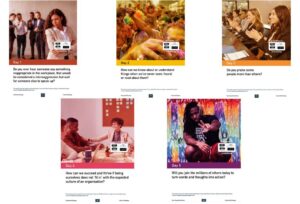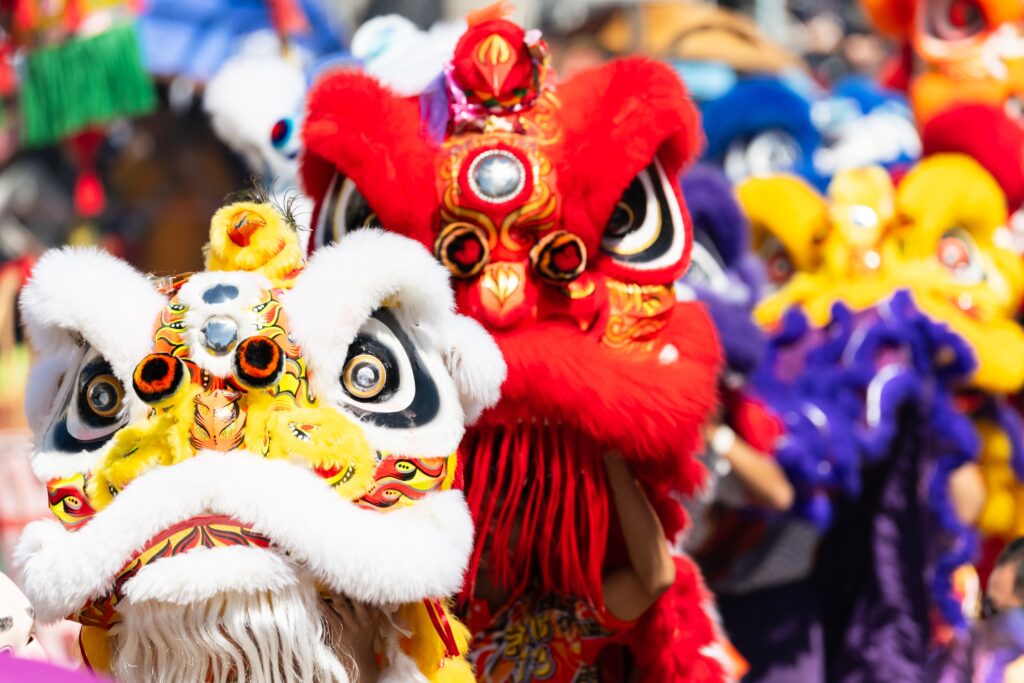**Amplifying External voices – In collaboration with Choon Tan**
Lunar New Year and Welcoming in the Year of the Dragon: How can your workplace celebrate everyone’s beliefs?
More than 2 billion people across the world will be celebrating Lunar New Year on 10th February, with many doing so until 24th February, bringing this two-week long festival to a close.
Whilst many of us benefited from the time off in December and January for Christmas and New Year, not everyone will be able to take time off to celebrate the Lunar New Year this February.
How can your workplace consider everyone’s beliefs and cultures during and post Race Equality Week?
Lunar New Year is celebrated across the ESEA (East and Southeast Asian) diaspora, but it is important to note not everyone does. For example, most people of Japanese and Thai heritage do not. Though commonly known as Chinese New Year, Lunar New Year is seen as the more inclusive term to use to describe the festival in a more general context due to ethnic, cultural, geographical and political differences and connotations. The ongoing pandemic created concerns for family members hoping to travel nationally and internationally for celebrations, but organisations can show solidarity with their employees that celebrate. How flexible are you in terms of granting annual leave around this time or allowing employees to swap your Christmas closure period if you have one for Lunar New Year, for instance?
The 5 Day Challenge 2024
Race Equality Matters’ new solution- the 5 Day Challenge– can help to tackle race inequality in the workplace. The first day of the Challenge is an ‘eye-opener’ that encourages people to reflect on their assumptions, actions and attitudes towards race and different cultures in their professional and personal lives.

When you or your team organise social activities, how often are everyone’s opinions, concerns and beliefs taken into account?
The Lunch Break Bonding survey, with over 200 organisations, found that 75% of employees would enjoy their workplace more if there were more social/team-building activities.
However, workplace social activities can often be isolating for certain individuals that do not feel included in the workplace culture. Whether for religious reasons or homelife commitments, some social activities can often exclude employees.
A 2020 study found that more than 10% feel excluded by work socials/drinks, with another study indicating that many feel obliged to attend drinking events even if they do not want to attend. Creating a diverse organisation goes beyond the confines of the workplace and requires a holistic approach to inclusivity, including social activities.
How can work social activities reflect and engage everyone in a workplace?
The Lunar New Year can be celebrated within the workplace through cultural education on the meaning and diversity of the festival, with information available on Inclusive Employers and ideas for being more inclusive and supportive on Tan’s Topics. Whilst social activities or ‘lunch and learns’ can be a fun team-building exercise, this does not directly create change or genuine inclusion. Since the pandemic, east and south-east Asian people have been subject to greater racism and hate-crime, and awareness of this has been promoted by many within the community, including Kimi Jolly – executive director of the support group and helpline ESA Scotland since 2022, who says:
“People from east and south-east Asian communities have experienced a huge increase in verbal and physical racially motivated attacks yet, up to now, there has been no support tailored to them in terms of language, cultural awareness and being able to record their ethnicity accurately.”
But the recent pandemic is not the first time anti-ESEA sentiments have been prevalent, says Choon Tan – Head of Events at Voice ESEA – who is keen to help educate people on the history of this mostly undiscussed issue with Yellow Peril Awareness Day on 6th May. “Yellow peril has been around for centuries in the West but until recently hasn’t been as brought to light as it should have. We aim to change that, change perceptions and understandings, and hopefully change the future, so this doesn’t happen again,” he says.
Comprehensive educational awareness could be promoted by your organisation in a number of ways. For example, many Chinese names hold symbolic significance despite often being Anglicised in a western context, and therefore education and emphasis on correct pronunciation could stimulate genuine improvement for your organisation’s inclusivity. Additionally, micro-aggressions such as asking people where they are really from or critiquing English language skills can “other” them into feeling like they don’t belong.
If you are doing a ‘lunch and learn’, think who is leading this or involved and how included are they in your diversity and inclusion efforts beyond Lunar New Year? This doesn’t just mean approaching them again for ESEA Heritage Month in September but looking at intersectionality and their contributions to your organisation all year round.
The CIPD 2019 report, Building Inclusive Workplaces, found that inclusivity goes beyond the office walls and requires a whole system refresh:
“Organisations need to take a systemic approach to inclusion, appreciating that inclusion isn’t about allowing ‘different’ people to ‘fit in’. Instead, inclusion is about creating an environment where everyone is appreciated for being individual.”
Whether your guidance looks to use a more diverse celebration calendar (starting with the Lunar New Year) or encourages participatory suggestions from all in the organisation, every aspect of an organisation ought to uphold a commitment to inclusivity.
Workplace culture prevails outside of the 9 to 5.
Start your journey today. Download the Five Day Challenge Guide. #ListenActChange
Image Shutterstock

